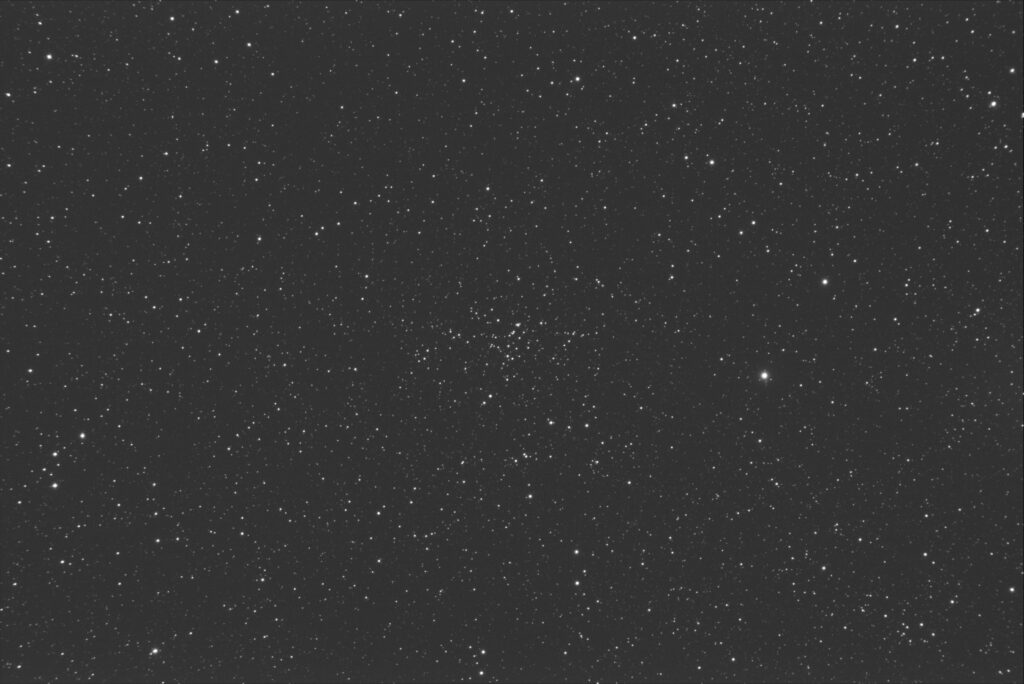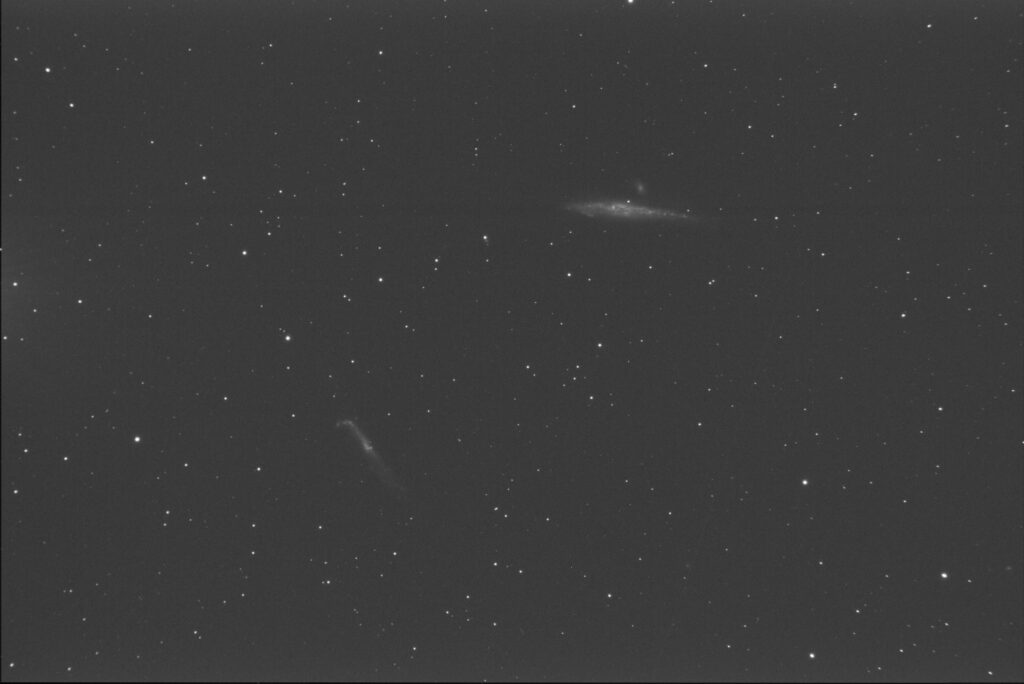Session Data
- Date: 11/5/2024
- Time: 23:17 – 00:50 UT
- Seeing: II. Good – Slight
- Transparency: III. Clear with slight haze.
- Temp: 12 C,
- Air Pressure: 1016mb
- Humidity: 85%
- Dew Point: 9C
- Wind Speed: 8mph
- Average Seeing: 3.9 FWHM
- Average SQM: 20.21 magn/arcsec^2
Scope: TMB 80 f/6 Camera: ZWO ASI 183MM Pro, No Filter. No Darks or Flats taken.
Session Notes:
I was hoping to see the Aurora this evening, but apart from a very faint reddish glow on the horizon, I’ve seen nothing to get excited about. Rather than waste a clear night, I used the TMB that has been used earlier in the day for imaging the Sun.
Image orientation: North up and East to the left.
NGC6866, HT100

I really only observed this again as I wanted to use the cluster as a focus check. But using the much wider FOV of the TMB you do get a much more complete picture of this cluster than with the RC.
I still see the fluted Champagne glass shape seen in previous observations, but now you see all manner of lines of stars curving in all sorts of directions.
Total integration 160sec
NGC4656, HT67

I make this about 9 arc-min long with the hook of the hockey stick facing off to the East. At its core there are a couple of bright nebulous regions with what look like two soft stars to the West. At the hook there 6 nebulous regions running along its length. From the centre of the stick to the handle end the tail of the galaxy flows in a gentle widening curve to the South then West. If you don’t see a hockey stick shape, think of a Moorish dagger.
In the same FOV to the northwest is NGC4631 The Whale galaxy. It’s nice to be able to see both these objects in the same FOV. The log of which is given below.
NGC4631
One of my favorite objects – the whale galaxy with its smaller companion NGC 4627. In a visual observation of that, I never saw the companion, but with EAA it is so obvious.
The whale looks more like a sturgeon with its head facing towards the East. The dark dust lanes of this edge on galaxy obscure the brighter regions underneath. You can just make out the Northern cap of the bright core above which is a bright 12.6 mag star 4UCAC613-050691 I estimate the galaxy to be 11 arc-mins long.
In the same FOV to the Southeast is NGC4656
Total integration 280sec